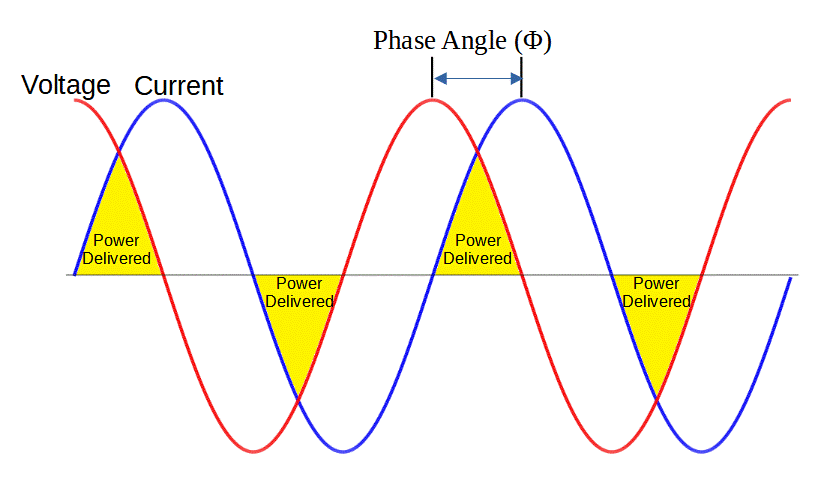A handy calculator for determining the active, reactive, and apparent power in an AC circuit. An explanation of active, reactive, and apparent power can be found just below the calculator.
AC Power Calculator for Active, Reactive, Apparent Power
Apparent Power
Apparent power is the measure of RMS volts times RMS amps. Apparent power is measured in volt-amps, abbreviated VA. This measurement that is often incorrectly understood to be the actual supplied by the circuit.
Apparent power is found by the following equation:
Apparent\;Power= V\times I
Active (Real) Power
Active, or real power, is the time average of the instantaneous produce of voltage and current. Active power is measured in watts.
Active power is given by:
Active\;Power= V\times I\times \cos{\phi}Reactive Power
Reactive power is the time average of the instantaneous product of voltage and current with the phase of the current shifted by 90 degrees. Reactive power is measured in units of ‘volt-amps reactive’, or VAR.
Reactive power is given by:
Reactive\;Power= V\times I\times \sin{\phi}- Apparent power, which is the product of rms (root mean square) volts
and rms amps. (VA, volt-amps) - Real power, which is the time average of the instantaneous product of
voltage and current.(Watts) - Reactive power, which is the time average of the instantaneous product
of the voltage and current, with current phase shifted 90 degrees. (VAR, voltamps reactive)
Phase Angle in AC Circuits
The phase angle is the difference in phase between the voltage and the current in an AC circuit. Phase angle occurs due to inductive or capacitive elements in the circuit.
The following image shows how the delivery of real power is affected by these elements in an AC circuit.

When the voltage and current are in the same direction, power is delivered. However when the voltage and current oppose one another, power is not delivered. There is a loss of power which is described by the difference between real power and apparent power.